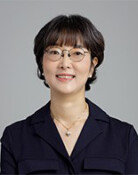Artist Lee Woo-hwan in trouble for 'verified' fake paintings
Artist Lee Woo-hwan in trouble for 'verified' fake paintings
Posted July. 04, 2016 07:35,
Updated July. 04, 2016 08:09
"In 1978 and 1979, I drew 30 to 40 pieces a day at maximum. Many exhibited works were not even included in the work book. I used to sell my painting to a gallery, but sometimes I did not receive any money and the paintings were missing. Frequently, I left space for a signature or a registration number empty for the gallery to fill in."
This is what Lee Woo-hwan (80) said in a press conference on Thursday. Lee has been caught up in controversy on whether his paintings are genuine, while some wonder "why him among others?"
In the late 1970s when Lee became famous and demand for his paintings surged, he had to mass-produce hundreds of paintings within two years. Naturally, the mass production left loopholes, which was an attractive target to forgers.
Hyun (66), who has been arrested for copying Lee's paintings, reported in a police investigation, "There was a guy named Lee (68) who sold antique items in Busan and Japan. He came to me one day in 2011 and suggested, "Let us sell fake paintings to the chairman of a Japanese business group who loves Lee's paintings." Hyun confessed that he made around 50 fake paintings in a workshop in Namyangju City, Gyeonggi Province with another Lee (39) who was in charge of drawing. They even made fake signatures, registration numbers, and certificates of authenticity for Lee's paintings made in 1978 and 1979.
They sold fake paintings to Japanese collectors and brokers via K gallery in Jongno-gu, Seoul. The gallery sold a painting with Lee's written confirmation for 400 million won to an individual collector in 2012. This painting is one of the four that the police announced were fake. However, after a police investigation at the end of last month, the painter claimed, "Both the written confirmation and the painting are genuine."
The fine art communities argue that Lee firmly believed the sold paintings were genuine because of the written confirmation. Usually, fake painting cases are not made public as galleries buy back fake paintings that they have sold. However, in this case, Lee and his partner gallery made it official by suggesting the written confirmation as evidence of genuineness. Reportedly, Lee had let the gallery make the certificate of authenticity as a sign of trust since the late 1970s as the gallery sold a lot of his paintings.
Lee will be responsible for the failure of the written confirmations attached with the fake paintings. His long-built reputation and trust could be destroyed. Lee noted that his overseas business has been severely damaged already. The gallery, which almost has a monopoly of Lee's paintings, will have to deal with a wave of complaints from customers.
손택균기자 sohn@donga.com
Headline News
- N. Korea launches cyberattacks on S. Korea's defense companies
- Major university hospital professors consider a day off each week
- Italy suffers from fiscal deficits from ‘Super Bonus’ scheme
- Inter Milan secures 20th Serie A title, surpassing AC Milan
- Ruling and opposition prioritize spending amid tax revenue shortfalls







